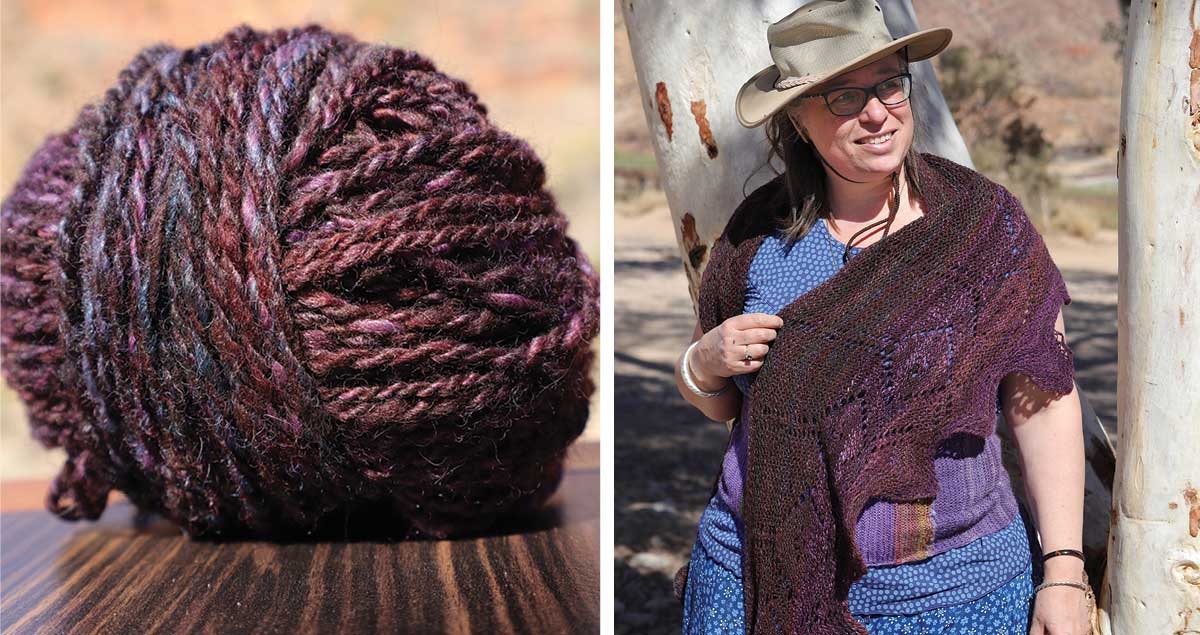Pattern and designer Pinecliff Shawl by Silvia Silva. Ingrid test-knitted the pattern for the designer.
Fiber/preparation About 300 grams (10.6 ounces) of hand-dyed roving and sliver, which was generally spun from the whole width with no splitting or predrafting. The singles were quite compact, and the yarn was firmly plied to make it bouncy.
Wheel/spindle Kromski Sonata, scotch tension
Ratio 14:1 and 6.7:1
Drafting method Short-forward draw
Singles direction Z-twist
Yarn 2-ply; 1,079 ypp; 9 to 10 wpi
Yarn classification/weight Worsted weight
Yardage Used 547 yards
Needles U.S. size 8 (5 mm)
Finished size About 99" wide after blocking
In 2007, I was spinning a lot of singles. At the time, I had accumulated a great deal of multicolored roving in my stash purchased on a wild shopping spree on Etsy and acquired from fiber clubs. Once I had amassed a large assortment of spun singles, I would wind my singles off into balls. I kept them displayed in a large bowl, trying out different combinations.
From there, I tried plying different colors together as an experiment, duplicating colors and color schemes found in nature in my home country of Sweden. These skeins were the absolute leftovers, dark and moody with subtle changes in variegation. Having plied many skeins that were much happier and brighter in mood, I eyed these darker yarns and wondered what they would end up being.
The Sonata was my first spinning wheel so some singles ended up a bit uneven in thickness. Spindle spinning was my go-to method before learning how to spin and ply on a wheel, which is quite different from spinning on spindles.

Left: Two-ply yarn on the banks of the Finke River. Right: Ingrid wearing her shawl in the Northern Territory of Australia.
I never measured the singles wraps per inch (wpi), but I was spinning all singles to match a favorite singles yarn, which measured 600 to 700 meters per 100 grams.
When I saw the Pinecliff Shawl pattern on Ravelry along with the call for pattern test knitters, I was immediately drawn to it. I also liked the pine cone and forest theme, and I thought about my plied skeins inspired by nature. I test-knitted the shawl for the designer and didn’t check the gauge, for I was working with a thicker yarn and a different needle size than originally used. I looked more for stitch definition and an appearance I liked in my garter-stitch fabric. The high ply twist helped create a fabric that is quite elastic and springy and quite the opposite of drapey.
The photos are taken in a truly exotic and remote location, Finke River in the Northern Territory of Australia, also called the Red Centre of Australia, in the West MacDonnell Ranges.

